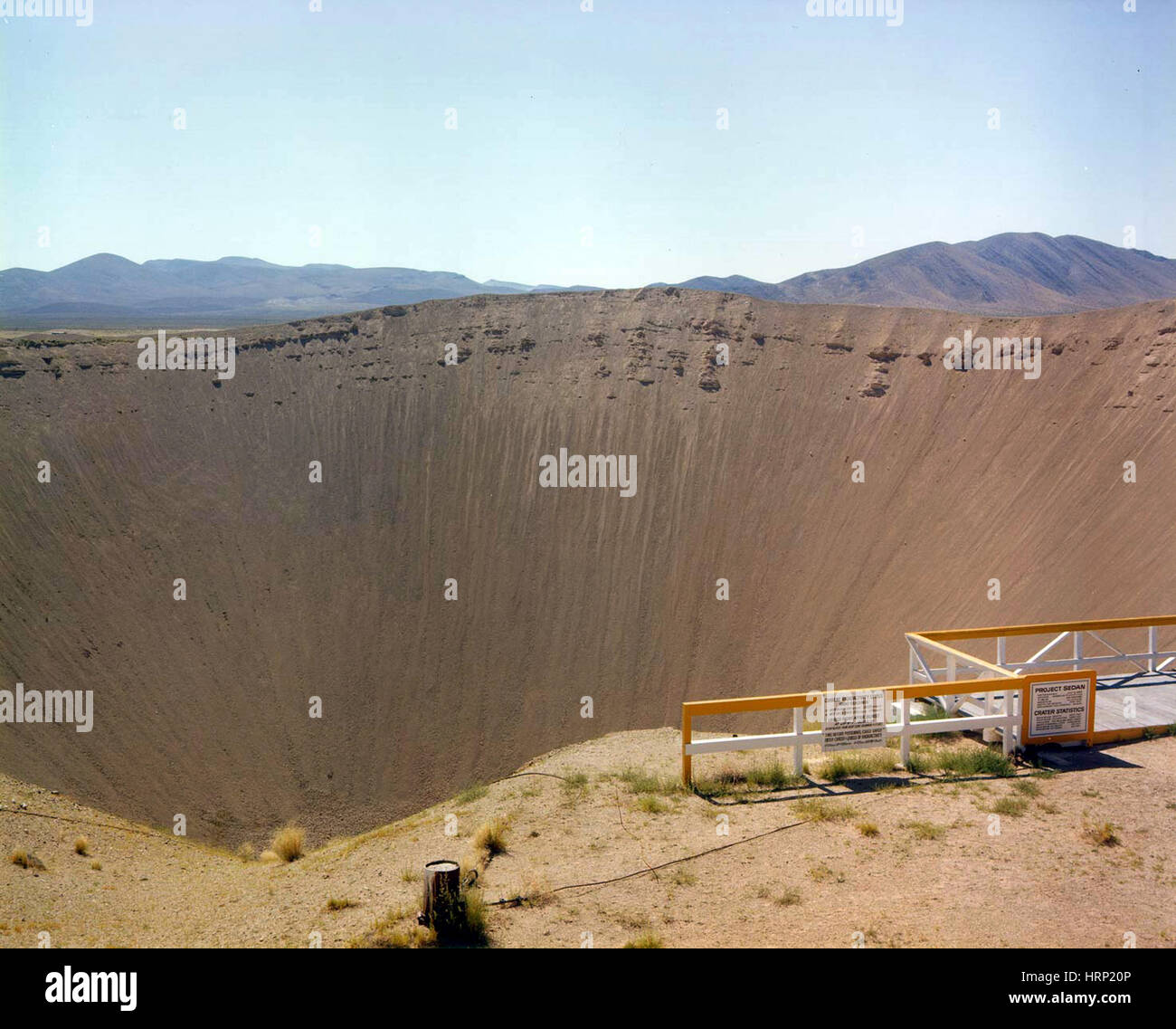Operation Plowshare, Sedan Crater

Image details
Contributor:
Science History Images / Alamy Stock PhotoImage ID:
HRP20PFile size:
37.8 MB (1.1 MB Compressed download)Releases:
Model - no | Property - noDo I need a release?Dimensions:
4050 x 3264 px | 34.3 x 27.6 cm | 13.5 x 10.9 inches | 300dpiPhotographer:
Photo ResearchersMore information:
This image could have imperfections as it’s either historical or reportage.
Sedan Crater is a 1, 280 by 320 foot crater was created on July 6, 1962 by a 104-kiloton-of-TNT (440 TJ) nuclear explosion. The device was buried 635 feet below the desert floor in Area 10 of Yucca Flat and was the largest cratering shot in the Plowshare Program. The explosion created fallout that affected more US residents than any other nuclear test, exposing more than 13 million people to radiation and marked the end of the program. The crater was listed on the National Register of Historic Places on March 21, 1994. The crater can be seen from earth orbit with the unaided eye. Operation Storax was a series of 47 nuclear tests conducted by the United States in 1962-1963 at the Nevada Test Site. Sedan was one of the most spectacular nuclear test ever fired in the continental United States. It was an LRL test conducted under the auspices of the Plowshare program, which was an attempt to develop non-military uses for nuclear explosives. The purpose of Sedan was to investigate the potential of "clean" thermonuclear devices for producing large craters cheaply. Look to the size of the roads in the bottom-right of the picture, and the observation deck at the lower-right edge of the crater, for a sense of scale. AKA Project Plowshare was the overall United States term for the development of techniques to use nuclear explosives for peaceful construction purposes.